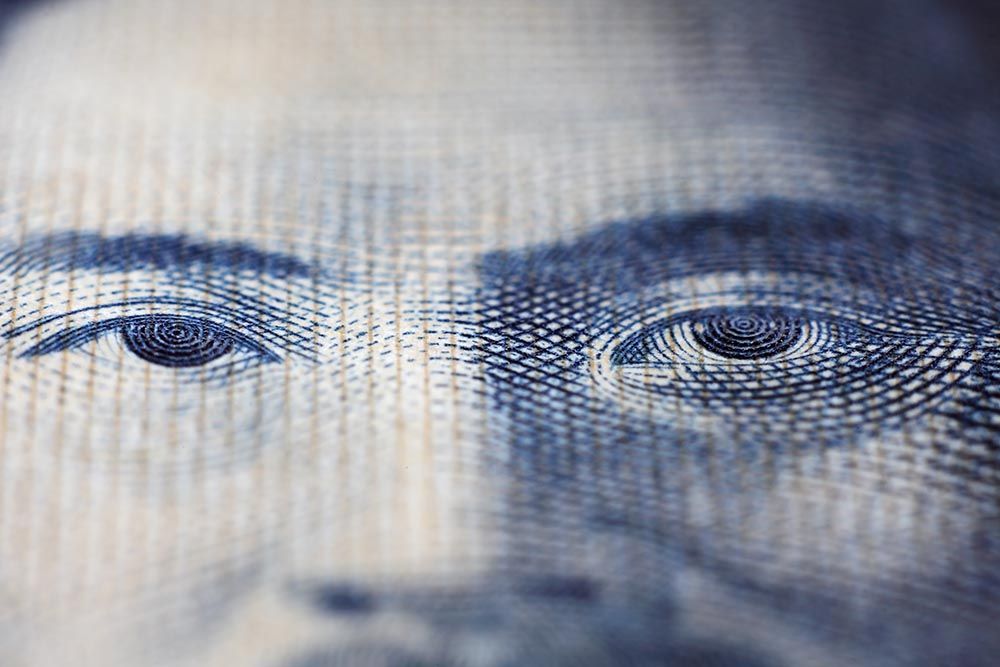Japanese Yen to Rise Further on Safety Flows and Increased FX Hedging

Image © Adobe Stock
- Yen rises after U.S. stock markets tank on poor data
- Further upside may result from increased hedging
- Japanese pension fund changes a red-herring
The Japanese Yen is rising from increased safe-haven flows as a global stock market rout takes hold, with analysts at investment bank Morgan Stanley saying they see the trend of appreciation accelerating as domestic investors take out further currency hedges.
Newfound fears of a slowdown in the U.S. economy has meanwhile reduced the competitive appeal of the Dollar which used to be the safe-haven of choice for investors.
Now other safe-haven alternatives - by which it is meant assets which rise in a crisis - such as the Yen and gold are benefiting as a consequence.
This is reflected in the USD/JPY rate, which is trading 1.13% lower on the day at the time of writing, at 106.70.
Against Sterling, the Yen is also rising - the Pound-to-Yen exchange rate is trading at 131.40 - almost a percentage point higher on Friday.
This week, two important leading indicators of growth, the U.S. Manufacturing and Non-Manufacturing ISM gauges showed much deeper-than-expected contractions in September, igniting U.S. growth concerns.
As a consequence the Dow Jones industrial stock average broke below its key 200-day moving average (MA) on the charts for the first time since September 15, ringing bear market alarm bells on Wall Street.
Although it has since recovered, fears persist in relation to the ISM data.
The Yen is likely to continue to trade with a bullish bias, according to analysts at investment bank Morgan Stanley.
They argue traders can disregard domestic headwinds such as the risk from reforms to hedging requirements for Japan’s Government Pension Investment Fund (GPIF),
It had been feared reforms would weigh on the Yen as they allow the GPIF to make unhedged foreign investments of up to $30bn, however, Morgan Stanley argues this is a minor issue in the big picture of JPY daily flows.
“Within the context of a daily JPY turnover of US$260 billion per day in the spot market, the amounts discussed here are small,” says Hans Redeker, chief analyst at the bank.
In fact the overall picture suggests more, not less, hedging from Japanese investors in the future, says Redeker.
As the Dollar weakens Japanese investors will want to increasingly hedge their FX exposure to their massive holdings of U.S. treasury bonds.
Since hedging against U.S. Dollar weakness or Yen strength involves opening bearish bets against USD or bullish bets in favour of JPY to offset adverse moves, it can have its own impact on the underlying market, pushing USD/JPY lower.
“Given the very large size of Japanese investor exposure to US fixed income markets, small increases in hedge ratios will have outsized downside impacts on USDJPY,” says Redeker.
The majority of Japan’s $3.4bn fixed income holdings are Dollar-denominated and even just a plausible 1.0% rise in hedging ratios would have a much greater impact on USD/JPY than the GPIF.
“A 1% move in Japanese investors' FX hedge ratio would result in a much larger FX impact compared to that resulting from the GPIF changes,” says Redeker.
Time to move your money? Get 3-5% more currency than your bank would offer by using the services of foreign exchange specialists at RationalFX. A specialist broker can deliver you an exchange rate closer to the real market rate, thereby saving you substantial quantities of currency. Find out more here.
* Advertisement
